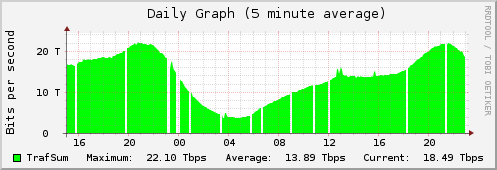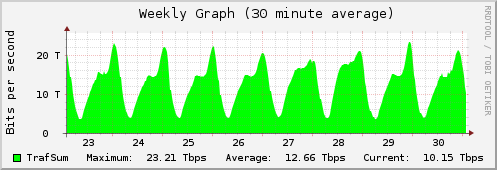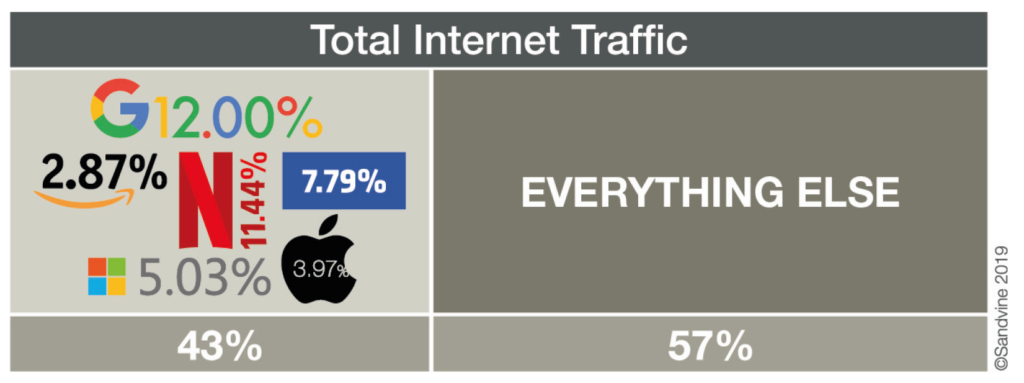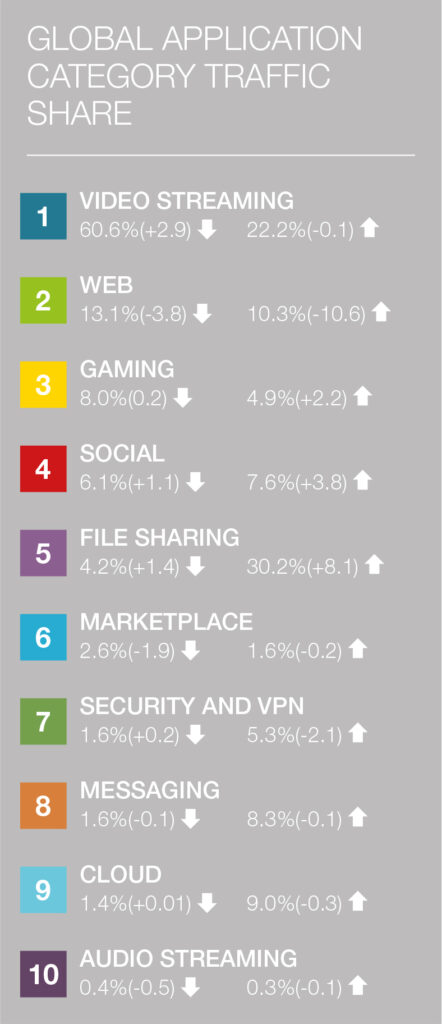The time period between 7pm and 9pm local time with additional highs at the weekend is seen as the Internet Rush Hour. Most people are using internet services with high volume traffic like Netflix, YouTube or Twitch during these hours.
It is not very surprising that during the evening and on weekends the internet usage is at a peak. Most people have enough time and want to consume the latest Netflix shows, view YouTube videos or play video games – which require content updates.
Gladly, the internet rush hour is bound to the time zone. That means that during the internet peak hour at 7pm at the North America east coast (EST), it is still 4pm at the North America west cost (PST). The west coast will first reach their peak in 3 hours.
The time period of the internet rush hour can be easily identified by looking at the statistics the internet exchange points (IXP) provide. Please note that IXPs from the United States don’t publish any extensive statistics. Nevertheless the behaviour in the United States won’t dramatically differ to other countries.
Internet rush hours at IXPs
AMS-IX (Amsterdam Internet Exchange)
The Amsterdam Internet Exchange has a throughput at around 6.5 TBit/s during peak times.
DE-CIX (Deutscher Commercial Internet Exchange)
In Germany, DE-CIX is the company which connects the country with the world. DE-CIX operates all over the world. In Frankfurt’s exchange there is a throughput of more than 7 TBit/s during the internet rush hour
DE-CIX provides the traffic statistics of all their sites.
IX.br (Brazil Internet Exchange)
IX.br is Brazil’s largest internet exchange point. During peak times around 5 TBit/s are transferred.


More statistics can be found at https://ix.br/trafego/agregado/sp
What content eats the most bandwidth during the internet rush hour?
Google (YouTube) and Netflix are responsible for more than 23% of the total internet traffic. The traffic is accumulated over the complete year (2019). For streaming alone (HTTP media stream, Netflix, YouTubeYou can imagine, that during the evenings the total used bandwidth for services like Netflix and YouTube are effectively higher as more people are watching the latest shows.

By category, video streaming uses 60.6% of the download bandwidth in 2019. This is an increase of 2.9% on the prior year.

How mobile devices might change the time period of the internet rush hour
The usage of mobile internet has increased drastically in the last years. More and more high volume content is consumed on mobile devices like smartphones and tablets. This leads to the interesting question if the internet rush hours will change as the user behaviour changes: With mobile devices you can consume content during your lunch time or in the train before the beginning or after the end of your work day.
At the moment, there is no sign that such a change has happened. But looking at the statistics may be a hint for a long-term change.
Can new hardware solve the internet rush hour problem?
In 2017, the University College London showed a new receiver technology for high data rates. Based upon the study, sciencedaily.com asked if it could help to solve the internet rush hour phenonem. The answer is: Probably not.
As soon as a new base technology provides more speed or bandwidth, there will be other technologies or applications which makes use of the new possibilities. It is only a matter of time when Netflix and Amazon will provide their streams not only as 4K but as 8K. In the worst possible situation this would double the traffic.
Compensating internet rush hours through caches
To reduce the total amount of internet traffic during the internet rush hours, larger content like audio and video files are cached. This means that the content, like a video, will be copied to different datacenters all over the worls. The end user downloads the content from the nearest location. This reduces the total amount of throughput.
For businesses without own datacenters or large IT infrastructures, content delivery networks or content distribution networks (CDNs) like Cloudflare or Amazon CloudFront do exist. Customers can use the infrastructure of those provides to distribute their content all over the globe.
Services like Netflix or larger gaming platforms provide their own caching infrastructure. Your local internet provider downloads automatically the latest updates like video stream and games. As soon as you request the content, it will be downloaded directly from your internet provider. The internet rush hour is prevented as you don’t need to connect to other countries.


